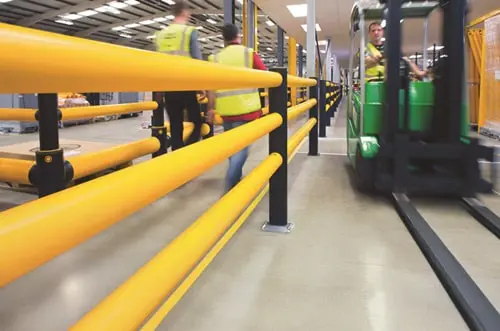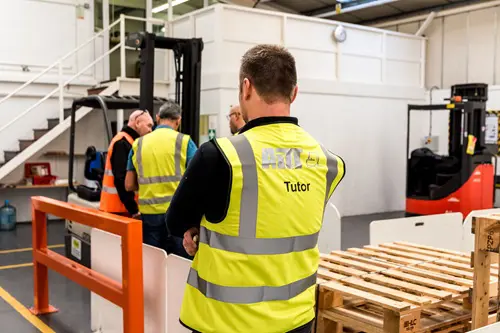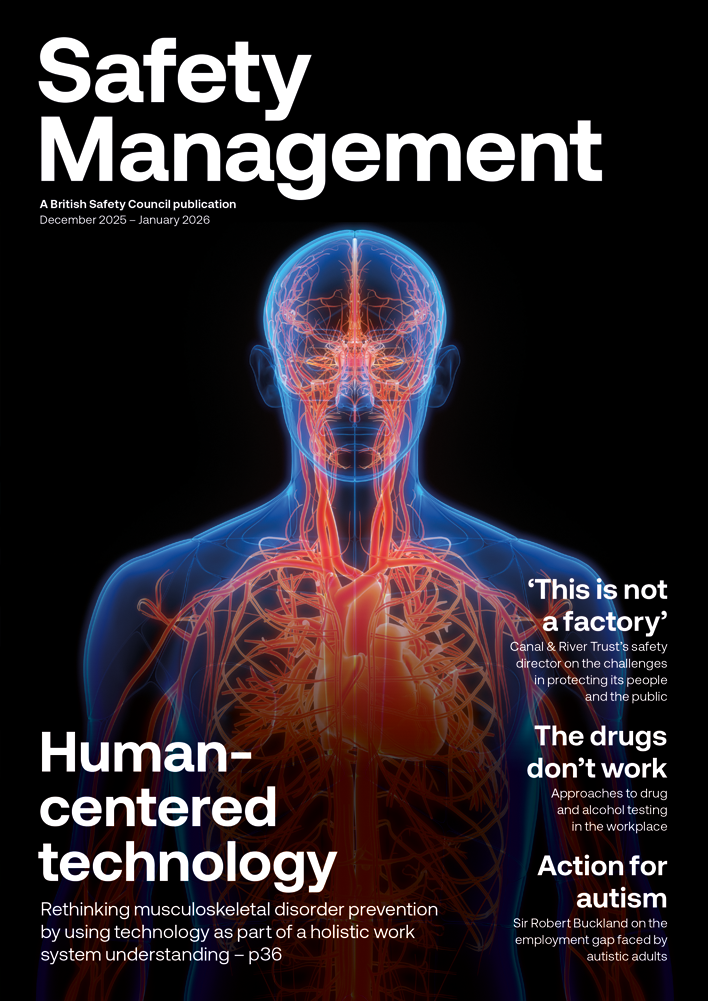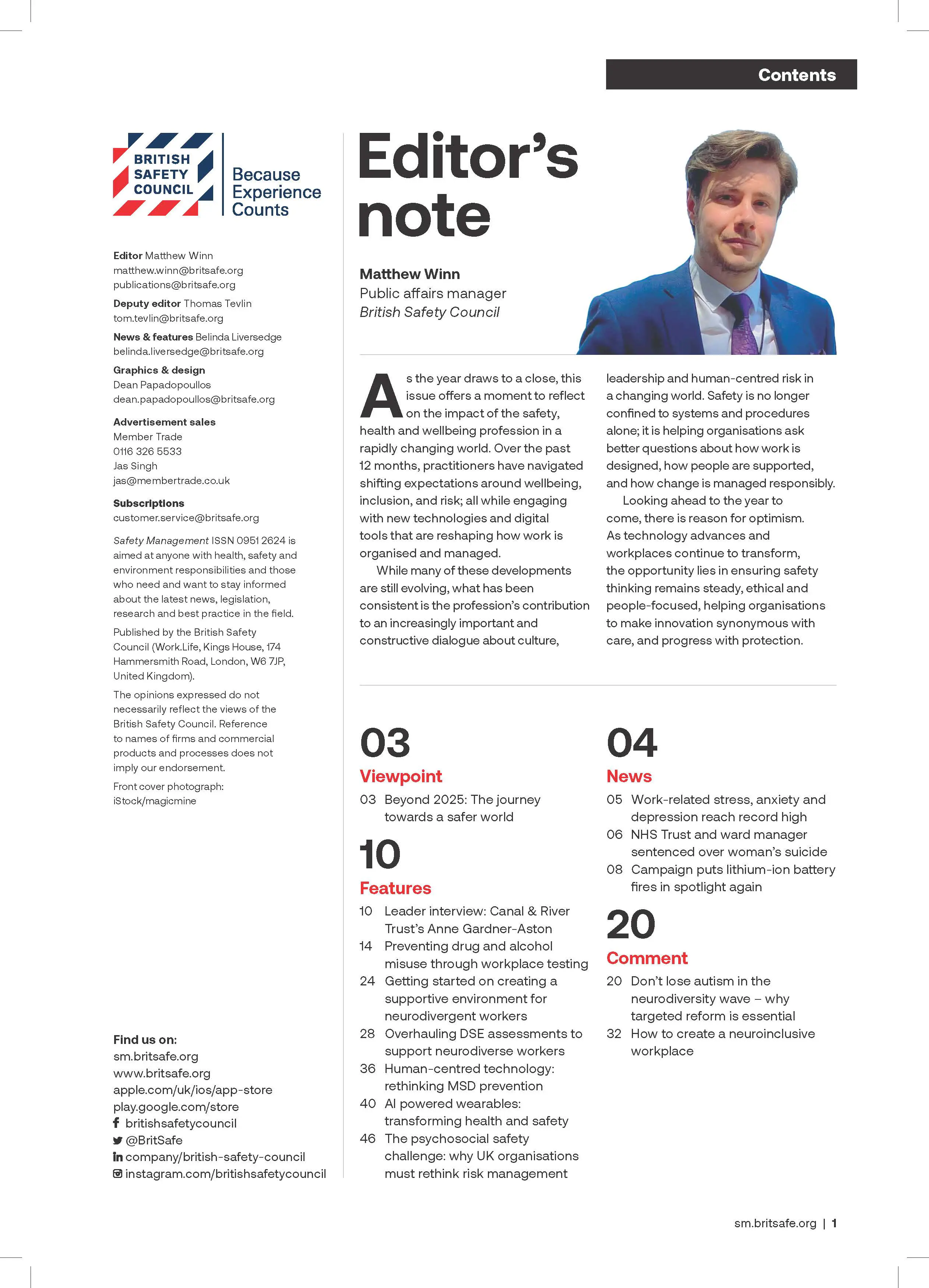There are growing concerns about the heightened risk of asbestos exposure in schools and hospitals, but the UK is falling behind Europe in tackling the problem of asbestos in non-domestic buildings.
Features
Mesothelioma caused by asbestos in UK schools and hospitals: an ongoing risk to public health
Introduction
This article will provide:
- A brief overview of the current political context concerning asbestos management
- Data about the risk of asbestos exposure in schools and hospitals
- Insights about the impact of non-traditional asbestos exposure on the experiences of mesothelioma patients and their families.
This article is informed by two research studies undertaken at the Mesothelioma UK Research Centre: the Mesothelioma Asbestos Guidelines Study (click here for further information); and the Mesothelioma Education Workers Study (click here).
 Photograph: iStock/D-Keine
Photograph: iStock/D-Keine
Mesothelioma: what it is, incidence and the patient profile
Mesothelioma is an incurable cancer caused almost exclusively by exposure to asbestos. The UK has the highest recorded rate of mesothelioma in the world (Bianchi & Bianchi, 2014; Peto et al., 2009). While treatment is improving, most patients die within 12 months of diagnosis (CRUK, 2019).
In Great Britain, there are approximately 2,500 mesothelioma deaths each year. This is 10 times more than the annual number in the 1970s (HSE, 2023). Following the UK ban on asbestos use in 1999, the number of people diagnosed with mesothelioma is expected to decline, in line with the 15–45-year time lag between exposure and onset of the disease. It is predicted that mesothelioma will continue causing 2,500 deaths annually in Great Britain until 2030 (HSE, 2023), after which the number of deaths is expected to decline.
However, there is concern and growing evidence that ‘background’ exposure to asbestos remaining in our buildings could postpone the hoped-for decline in mesothelioma incidence (Mesothelioma UK, 2023; Taylor et al., 2023). In addition, the patient profile may be changing from men in high-risk occupational groups (HSE 2023), such as construction, to those who work in degrading buildings, such as school workers. Numerous buildings constructed before the asbestos ban still contain the material. Asbestos remains present in 94 per cent of hospital trusts in England and 80 per cent of UK state schools (Morrin et al., 2019).
What is the risk to children?
There is no data telling us how many children are at risk from asbestos-related diseases as a result of asbestos exposure in public buildings such as schools. However, some modelling suggests that nine times more pupils than education workers are likely to develop mesothelioma due to asbestos exposure in schools (Environmental Protection Agency, 1980). A more recent UK report estimated that between the years 1980 and 2017, the estimated number of UK mesothelioma deaths due to exposure to asbestos as school pupils ranged from 3,890 to 9,000 (JUAC, 2021).
Policy context
UK Parliamentary Work and Pensions Select Committee report
In April 2022, a UK Parliamentary Work and Pensions Select Committee report into the Health and Safety Executive (HSE) approach to asbestos management was published (HoC, 2022a). It argued that the current situation was unacceptable and posed a risk to public health if not addressed. It made several recommendations concerning future management of asbestos. The then Conservative Government accepted some but rejected two key recommendations (HoC, 2022b): 1) the development of a national asbestos register to ensure accurate records of asbestos in buildings; and 2) gradual removal of asbestos over the following 40 years, prioritising buildings where people are most at risk, such as schools.
ONS data underestimates the risk of asbestos exposure
The reason given for the decision not to remove asbestos was based on the low risk of exposure where the in-situ asbestos is effectively managed. Importantly, however, the Government has based its response on evidence about the risk of asbestos that has been shown to be a serious underestimate. Each year, HSE publishes statistics about the number of mesothelioma deaths by occupational group (HSE, 2023). This data, collected by the Office for National Statistics (ONS), was referred to as an indicator of risk for workers in hospitals and schools in the government response (HoC, 2022b) to the Select Committee recommendations (HoC, 2022a).
Crucial limitations to the dataset include:
- “It only includes deaths for people aged 74 and younger. The majority of mesothelioma patients are over the age of 74 (Mesothelioma UK, 2023) so are not counted.
- It only includes the final occupation of the person who has died, therefore missing those who changed occupation.
- It excludes those who worked in schools or hospitals in a maintenance, administrative or auxiliary position. There are many such positions in schools and hospitals.” (Taylor et al., 2024:3)
It follows that the ONS data used by the Government to justify rejecting the recommendation to remove asbestos is a substantial underestimate of the number of people with mesothelioma following exposure to asbestos working in a school or hospital environment (Taylor et al., 2024).
New evidence about the risk to people working in hospitals and schools
Concerns about the limitations inherent in the ONS data are further supported by evidence from Freedom of Information (FOI) requests. For example, ONS data records deaths per year from mesothelioma as around seven per annum (pa) for health professionals and 23pa for education professionals. By contrast, our research, based on FOI requests, shows that the numbers of former health and education workers claiming mesothelioma-related benefit payments are around 65pa and 70pa, respectively (Taylor et al., 2024).
Why in-situ management can be problematic
In addition to this underestimate of risk, there are concerns about the Government’s response that in-situ asbestos can be, and, more importantly, is being, effectively managed. In the first place, the poor condition of public buildings, such as schools and hospitals, is well established (Cordery, 2022; NAO, 2023).
Further to this, a survey of asbestos in UK buildings reported failings of current policy to manage asbestos in situ effectively and appropriately (ATAC & NORAC, 2022). The survey found that 71 per cent of the 710,433 items of asbestos found were damaged, evidencing the inadequacy of the current policy of in-situ management.
Another concern is the nature of school environments, in which children behave as children do. Such wear and tear is above what is expected in a building that is not used by children every day and is not accounted for in the Government’s in-situ management policy.
What next?
Despite the UK Government’s response to recommendations in the Select Committee report, debate regarding current policy for managing asbestos risk has maintained momentum. Campaigns, such as ‘Airtight on Asbestos’, led by ResPublica, and ‘Don’t Let the Dust Settle’, led by Mesothelioma UK, have continued to raise awareness and lobby for change. These campaigns are underpinned by more health and school workers being diagnosed with mesothelioma. One example is Helen Bone, a nurse who was diagnosed with mesothelioma aged 38. Helen’s story can be read on Mesothelioma UK’s website and BBC News.
New evidence addresses concerns that removal of asbestos from public buildings is not cost effective (Mesothelioma UK, 2023). This evidence suggests the benefits of removing asbestos from schools and hospitals over a 10-year period would outweigh the cost by a factor of three. The report shows that there is a clear cost-benefit argument to removing asbestos from UK schools and hospitals.
How does the UK compare to elsewhere in Europe?
In 2023, the European Commission initiated a public consultation on a proposal to implement mandatory screening and registration of asbestos in buildings across Europe. This initiative aims to enhance transparency and provide accessible information about asbestos to those at risk, such as construction workers and building occupants. This legislative effort reflects the EU Commission’s commitment to addressing the dangers of asbestos exposure that is not matched by the UK Government.
If the UK Government wishes to manage asbestos in situ, air monitoring must be considered an essential aspect, especially in schools where there are additional concerns about wear and tear, as mentioned above. At present, air monitoring is only routinely used when asbestos is treated or removed.
 Photograph: iStock/georgeclerk
Photograph: iStock/georgeclerk
There are, however, further concerns about what the UK considers a safe level of airborne asbestos compared to other developed European nations. For example, the UK’s current regime allows a ‘clearance level’ of airborne asbestos (0.01 f/cm³) which is five times greater than the ‘environmental limit’ allowed in France (0.005 f/cm³) and 10 times greater than the acceptable ‘Occupational Exposure Limit’ in Germany (0.001f/cm) – click here for more details.
These observations raise serious questions about what the UK considers safe compared to other developed European nations.
Experiences of mesothelioma patients exposed to asbestos when working in a school or hospital
Those who develop mesothelioma in environments not yet recognised as high risk are likely to have different experiences to those who have worked in industries known to be high risk (Taylor et al., 2024). The following section draws on selected findings from our research to explain why these experiences may differ.
Low index of suspicion
There is often immediate suspicion of mesothelioma when a person with symptoms typical of mesothelioma has worked in an industry associated with asbestos exposure. People who have worked in industries not traditionally associated with asbestos exposure, such as hospitals or schools, are less likely to trigger timely suspicion among healthcare professionals. Similarly, as the industries known to be associated with asbestos exposure are dominated by men, women generally may be viewed by services with a lower index of suspicion. Although more statistical research is needed to further investigate this index of suspicion, qualitative data suggests that this is the case.
“They started asking me whether I’ve been exposed to asbestos and I was thinking no I don’t think so. I did, you know, and the chest surgeon … you know, he didn’t, couldn’t believe a teacher would have it because I wasn’t in any of the industries known for this disease.” (Source: YouTube Rosie Peters, patient, teacher (MEWS)).
A low index of suspicion has led to perceived delays in diagnosis as people with a work history not typically associated with asbestos exposure, and particularly women, presenting with symptoms were not expected to have been exposed to asbestos.
Distress and shock at diagnosis
It follows that patients who have not worked in a known high-risk occupation may be more likely to experience high levels of distress and shock upon receiving their diagnosis.
“You always think labourers get mesothelioma because they work so closely with these substances, but to be in a classroom day-in day-out with young children, it came as such a shock to us.” (Source: Freddie Davis, husband of Pearl Davis, a teacher who died of mesothelioma (MEWS)).
People unknowingly exposed to asbestos in an environment that was presumed to be safe spoke about a sense of injustice that they were not kept safe when working to educate or care for the public.
“I think, personally, now it’s ironic that I’ve dedicated 44 years of my life and, you know, that dedication is what’s killing me now. It’s ironic, really.” (Source: interview with health professional and patient (MAGS)).
People diagnosed with mesothelioma after asbestos exposure in an environment not typically recognised as high risk are likely to require additional psychological and emotional support.
Concern for others and ongoing risk
Great concern and, for some, anger, was felt upon learning that the asbestos risk persists in buildings such as hospitals and schools, along with the danger it continues to present. This can leave people with an enduring emotional burden.
“Mum was incredibly angry when she got her diagnosis as she was working in a school with asbestos. She worked … in primary schools with five-year-olds in reception. She hadn’t been able to protect them. Although Mum is now in the last weeks of her life, she is horrified that teachers and pupils continue to be exposed to asbestos in schools.” (Source: Lucie Stephens, daughter of Sue Stephens a patient and teacher (MEWS)).
Inequalities in accessing compensation
Mesothelioma is considered an industrial disease and therefore compensation is available to those who were exposed due to their employer’s negligence following the asbestos ban.
Compensation can support patients to:
- Access non-NHS funded treatments to lengthen their lives
- Support families facing loss of earnings as a result of the disease.
Our consultation with legal professionals highlighted that patients exposed to asbestos in an occupation not recognised as high risk are less likely to have a successful compensation claim.
If a builder or carpenter develops mesothelioma then a lawyer usually has less difficulty in finding likely points of exposure. This is far more difficult if a teacher or healthcare professional develops mesothelioma. In these cases, it may be difficult to find specific examples of exposure that were due to negligence on the part of the employer and it is likely that the employer will contest the case. This generates an inequality between patients exposed in a high-risk industry and those exposed in an environment not yet recognised to be high risk, such as in a school or hospital.
Conclusion
Asbestos remains a public health risk. People are being exposed to asbestos in occupations and buildings not traditionally associated with asbestos exposure. There is an urgent need to challenge assumptions about asbestos exposure and risk, raising awareness of the risk in public buildings, such as schools and hospitals. The ONS data is not fit to inform decisions about asbestos management and risk. Relying on this data is putting the public at unnecessary risk.
People with mesothelioma exposed to asbestos in environments not traditionally associated with asbestos exposure can face inequalities in care including delays in diagnosis, increased support and information needs and a more challenging route to seeking compensation that can prevent access to non-NHS funded treatments.
Mesothelioma is a preventable yet incurable cancer. Given our awareness of its dangers, why are public sector workers and school children still being put at risk?
About the authors
Bethany Taylor is a research fellow at the Mesothelioma UK Research Centre at the University of Sheffield. Peter Allmark is a research associate and Angela Tod is Professor of Older People and Care at the School of Allied Health Professions, Nursing and Midwifery, at the University of Sheffield. Liz Darlison is CEO of Mesothelioma UK.
Support the campaign for action on asbestos risks
The ongoing UK asbestos tragedy is shameful. Thousands of people dying each year, our schools and hospitals riddled with asbestos, countless being unknowingly exposed and most of our population oblivious to the dangers asbestos poses. But surely a change is coming. We now have intelligence that rigorously challenges the notion that there is “insufficient” evidence to support a change in the current asbestos management status quo.
Government must address this public health disaster. We implore ministers to take decisive steps to prioritise the effective management and eradication of asbestos from public buildings such as schools and hospitals to protect future generations.
For more information and the opportunity to get involved, see the following websites:
Mesothelioma UK Don’t let the dust settle campaign
Mesothelioma UK Research Centre, University of Sheffield
References
Allmark, P., Tod, A. M., & Darlison, L. (2020a). MAGS: the healthcare staff mesothelioma asbestos guidance study. tinyurl.com/mwd96emd
Allmark, P., Tod, A. M., & Darlison, L. (2020b). Mesothelioma: are nurses being put at risk in the workplace? Nursing Standard, 35(12), 14-16. DOI:10.7748/ns.35.12.14.s10
ATAC & NORAC (2022). The first annual data analysis report into asbestos in UK buildings. Asbestos Testing and Consultancy & National Organisation of Asbestos Consultants. tinyurl.com/ymwpv8ej
Bianchi, C., & Bianchi, T. (2014). Global mesothelioma epidemic: Trend and features. Indian Journal of Occupational and Environmental Medicine, 18(2), 82-88. Cancer Research UK (CRUK) (2019). Survival for mesothelioma. Cancer Research UK. tinyurl.com/4wavw7e2
Cancer Research UK (CRUK) (2019). Survival for mesothelioma. Cancer Research UK. tinyurl.com/4wavw7e2
Cordery, S. (2022). Old buildings and out of date facilities are costing the NHS dear. British Medical Journal, 378. doi.org/10.1136/bmj.o1862
Environmental Protection Agency (USA) (1980). Support document for proposed rule on friable asbestos-containing materials in schools: report no. 560/12-80-003. Washington. tinyurl.com/e8tn7py7
Health and Safety Executive (HSE) (2023). Mesothelioma Statistics for Great Britain, 2023. Health and Safety Executive. tinyurl.com/547szxh9
House of Commons, Work and Pensions Select Committee. (2022a). The Health and Safety Executive’s approach to asbestos management. Sixth report of session 2021-2022. House of Commons. tinyurl.com/4kc2d2s4
House of Commons, Work and Pensions Select Committee. (2022b). The Health and Safety Executive’s approach to asbestos management: Government Response to the Committee’s Sixth Report of Session 2021–22. House of Commons. tinyurl.com/5n7xmhj2
Joint Union Asbestos Committee (JUAC) (2021). Continuing Government failure leads to rise in school mesothelioma deaths: Are pupils and staff any safer today? Joint Union Asbestos Committee. tinyurl.com/2s3km5cs
Mesothelioma UK (2023). Clearing The Air: The costs and benefits of removing asbestos from UK schools and hospitals. Mesothelioma UK. mesothelioma.uk.com/clearing-the-air/
Morrin, M., Aldane, J., & King, H. (2019). Don’t Breath In: Bridging the Asbestos Safety Gap. ResPublica. tinyurl.com/2xhnetke
National Audit Office (NAO) (2023). Condition of School Buildings. National Audit Office https://www.nao.org.uk/reports/condition-of-school-buildings/
Peto, J., Rake, C., Gilham, C., & Hatch, J. (2009). Occupational, Domestic and Environmental Mesothelioma Risks in Britain: A Case-Control Study. British Journal of Cancer, 100(7), 1175-1183.
Taylor, B., Allmark, P., & Tod, A. (2022). The Experiences of Presentation, Diagnosis, Treatment and Care for School-Based Education Workers with Mesothelioma: A Scoping Review. International Journal of Nursing and Health Care Research, 5:1342. DOI: 10.29011/2688-9501.101342.
Taylor, B., Allmark, P., & Tod, A. (2023, April 18). The hidden danger of asbestos in UK schools: ‘I don’t think they realise how much risk it poses to students. The Conversation. tinyurl.com/muxe7mfs
Taylor, B., Allmark, P., & Tod, A. (2024). Mesothelioma caused by asbestos in UK public buildings: an ongoing risk to public health. People, Place and Policy, Early View, pp. 1-10. tinyurl.com/5yh649aj
FEATURES

Underpinning safety training with neuroscience for long lasting impact
By SSE Active Training Team (ATT) on 30 November 2025
A behavioural safety training programme developed by Active Training Team for energy provider SSE has been carefully designed with neuroscientific principles in mind – resulting in a prestigious industry award for Best Training Initiative in 2024.

Why a painted line will never be enough
By UK Material Handling Association (UKMHA) on 20 November 2025
Businesses that operate material handling equipment like forklifts are being urged to submit accident and near miss details to a new confidential reporting portal so the industry can identify what needs to be done to improve safety standards.

Why workplace transport training is changing in 2026 and what it means for employers
By AITT on 26 November 2025
New workplace transport training categories due in January mean it is essential to ensure operators of material handling equipment have the necessary training for the exact type of machine they use, and accredited training providers are an ideal source of advice and conversion training.



